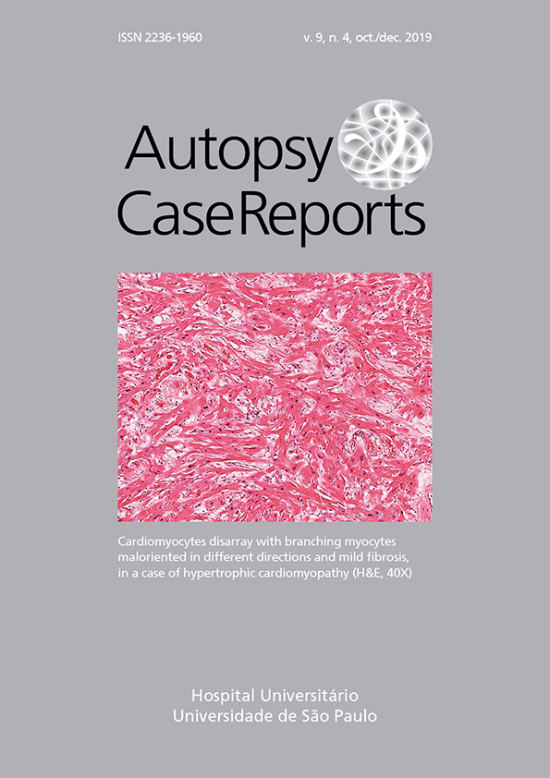Multiple cardiac rhabdomyomas in tuberous sclerosis complex: case report and review of the literatureCardiac rhabdomyoma is a benign tumor which constitutes the most common cardiovascular feature of the tuberous sclerosis complex, a multisystem geneticall
DOI:
https://doi.org/10.4322/acr.2019.125Keywords:
Rhabdomyoma, Tuberous Sclerosis, Infant, Newborn, Heart Neoplasms, Neurocutaneous SyndromesAbstract
Cardiac rhabdomyoma is a benign tumor which constitutes the most common cardiovascular feature of the tuberous sclerosis complex, a multisystem genetically determined neurocutaneous disorder. Cardiac rhabdomyomas can be detected in the prenatal ultrasound, are usually asymptomatic and spontaneously regress within the first three years of life. Less often, the tumors’ size, number, and location can produce a mass effect that may lead to blood flow abnormalities or organ dysfunction (heart failure and arrhythmia). In this setting, severe morbidity, and eventually, a lethal outcome despite clinical and surgical treatment may ensue. We describe a fatal case of multiple cardiac rhabdomyomas in a newborn girl. One of the rhabdomyomas was large and unfavorably located, causing significant obstruction of the left ventricular outflow tract. The autopsy identified, in addition to cardiac rhabdomyomas, brain glioneuronal hamartomas (cortical tubers), subependymal nodules and subependymal giant cell tumors, characteristic of the tuberous sclerosis complex. The newborn’s family was investigated for the presence of typical clinical symptoms of the complex and image findings showed significant phenotypical variations and a broad symptom spectrum among the family members. This interesting case underscores the variability of tuberous sclerosis complex and the importance of performing a comprehensive postmortem examination in the identification of the cause of death, especially in the setting of familial disease.
Downloads
Published
Issue
Section
License
Copyright
Authors of articles published by Autopsy and Case Report retain the copyright of their work without restrictions, licensing it under the Creative Commons Attribution License - CC-BY, which allows articles to be re-used and re-distributed without restriction, as long as the original work is correctly cited.



